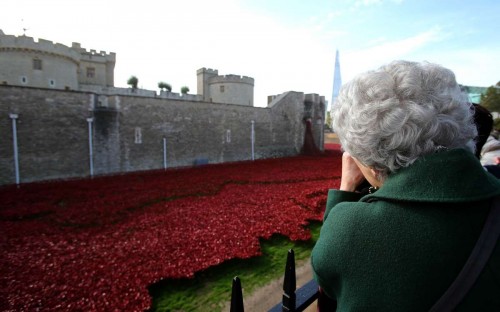
Prime Minister David Cameron, London Mayor Boris Johnson among senior politicians joined the campaign to save the Poppy Field installed at Tower of London to honour the heroes of World War I.
The art project, titled “Blood Swept Lands and Seas of Red,” brings 888,246 ceramic poppies to the property of Her Majesty’s Royal Palace and Fortress. But Historic Royal Palaces, which runs the Tower of London, has said it intends to start dismantling the artwork on November 12 – the day after Armistice Day. A team of 8,000 volunteers has been lined up to start removing and cleaning ceramic poppies, before dispatching them to buyers who have paid £25 each to raise money for armed forces charities.
Mr Cameron in a statement said the installation, created to mark the centenary of the start of the First World War, had become a “much loved and respected monument” in a short space of time. “I think the exhibition of the poppies has really caught the public imagination, people have found that incredibly moving,” Mr Cameron said. “What we’ve managed to do is find a way of saving part of the exhibition for the nation and making sure it will be seen by many more people.
“Then it will be permanently saved by the Imperial War Museum – I think the right place for it to be – and something that marks the fact that everybody has found it so moving, so poignant, and such a brilliant idea.”
“By displaying parts of the installation around the country and then permanently in the Imperial War Museum, we have ensured that this poignant memorial will be saved for the nation.”
“The poppy field at the Tower is a unique and poignant focus of remembrance in this centenary year,” the Mayor Johnson told the Evening Standard.
“It has grown rapidly in popularity, to such an extent that it is now a global visitor attraction.
“I’m keen to explore whether we can keep the exhibition open for longer, to give as many people as possible the chance to glimpse something so incredible, whilst easing the pressure on numbers.”